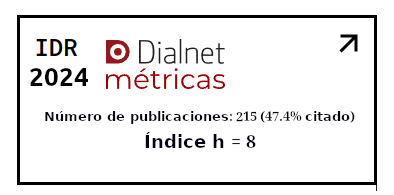Percepción de los derechohabientes del Instituto Mexicano del Seguro Social sobre el proyecto de reforma de universalización de la salud
DOI:
https://doi.org/10.30545/academo.2024.may-ago.4Palabras clave:
salud pública, seguridad social, universalización de la salud, financiamientoResumen
El objetivo de esta investigación consistió en determinar cómo perciben los derechohabientes del Instituto Mexicano del Seguro Social (IMSS) el proyecto de reforma de universalización de salud en cuanto a las variables financiamiento y prestación de servicios en la ciudad de San Luis Potosí, México. El estudio se ejecutó bajo un enfoque metodológico cuantitativo, no experimental, transversal, descriptivo y correlacional, aplicando un cuestionario a una muestra estratificada de 384 derechohabientes del IMSS. Si bien los resultados destacan el bajo conocimiento de los aspectos del proyecto de reforma hacia la universalidad de los servicios de salud, los usuarios confirman la necesidad de cambios en el sistema de salud actual y su disposición para realizar una aportación adicional condicionada a la mejora del servicio. Las conclusiones resaltan algunos avances en la migración hacia un sistema de salud universal, aunque todavía falta tiempo para lograr la aprobación de la reforma. Este trabajo pretende contribuir a la literatura existente ofreciendo reflexiones prácticas que sustenten el diseño e implementación de políticas públicas del sector salud.
Descargas
Citas
Abrantes Pêgo, R. (2011). La reforma del sector salud en México y la deuda pendiente con los desasistidos. Revista Gerencia y Políticas de Salud, 10(21), 5-8.
Arribas, M. (2004). Diseño y validación de cuestionarios. Matronas Profesión, 5(17), 23-29.
CONEVAL. (2012). Propuesta de un sistema nacional de servicios de salud. Centro de Estudios Económicos y Sociales en Salud (CEESES).
Contreras-Landgrave, G., Tetelboin-Henrion, C., & López-Gutiérrez, L. R. (2013). La opinión de los participantes sobre la reforma de la política de salud: Un estudio en los servicios locales. Revista Gerencia y Políticas de Salud, 12(24), 143-162.
Fleury, S. (2002). ¿Universal, dual o plural?: Modelos y dilemas de atención de la salud en América Latina. Banco Interamericano de Desarrollo, Instituto Interamericano para el Desarrollo Social (INDES).
FUNSALUD. (1994). Economía y salud: Propuestas para el avance del sistema de salud en México, informe final. FUNSALUD.
FUNSALUD. (2012). Universalidad de los servicios de salud. FUNSALUD.
González-Block, M. A. (1988). El traslape de la demanda en el sistema nacional de salud de México: Limitaciones a la integración sectorial. Salud Pública de México, 30(6), 804-814.
Hernández Sampieri, R., Fernández Collado, C., & Baptista Lucio, P. (2014). Metodología de la Investigación (6ª. ed.). McGraw-Hill/Interamericana Editores.
IMSS. (2019). Diagnóstico situacional de atención a la salud 2019: Programa presupuestario E-011. IMSS. https://www.imss.gob.mx/sites/all/sta tics/pdf/transparencia/evaluaciones/dpm/ppe011/diag/E011-2019-Diagnostico.pdf
INEGI. (2021). Cuéntame de México. https://cuentame.inegi.org.mx/poblacion/esperanza.aspx?tema=P
INSP. (2012). Encuesta Nacional de Salud y Nutrición 2012. https://www.insp.mx/ensanut/medio-camino-16.html
Juan, M., Moguel Ancheita, A., Valdés Olmedo, C., González Pier, E., Martínez González, G., Barraza Llorens, M., Aguilera Aburto, N., Trejo Rayón, S., Soberón Acevedo, G., Frenk Mora, J., Ibarra Espinosa, I., Lee, G.M., Tapia Conyer, R., Kuri Morales, P., Noriega Curtis, C., Cano Valle, F., & Uribe Zúñiga, P. (2013). Universalidad de los servicios de salud en México. Salud Pública de México, 55(spe), 1-64. http://www.scielo.org.mx/scielo.php? script=sci_arttext&pid=S0036-36342013000600001&lng=es&tlng=es
Layton, N., Bell, D., Borg, J., Steel, E., Maclachlan, M. Tebbutt, E. Khasnabis, C., & Swaminathan, S. (2020). Assistive technology as a pillar of universal health coverage: qualitative analysis of stakeholder responses to the world health assembly resolution on assistive technology. Disability and Rehabilitation: Assistive Technology, 15(7), 825-831.
Londoño, J. L., & Frenk, J. (1997). Structured pluralism: towards an innovative model for health system reform in Latin America. Health Policy, 41(1), 1-36.
López-Carmona, J.M., Ariza-Andraca, C.R., Rodríguez-Moctezuma, J. R., & Munguía-Miranda, C. (2003). Construcción y validación inicial de un instrumento para medir el estilo de vida en pacientes con diabetes mellitus tipo 2. Salud Pública de México, 45(4), 259-268.
Nkomazana, O., Mash, R., Shaibu, S., & Phaladze, N. (2015). Stakeholders’ Perceptions on Shortage of Healthcare Workers in Primary Healthcare in Botswana: Focus Group Discussions. PLoS ONE, 10(8), https://journals.plos.org/plosone/ article?id=10.1371/journal.pone.0135846
OMS. (2010). Informe sobre la salud en el mundo: la financiación de los sistemas de salud: el camino hacia la cobertura universal. OMS.
OPS. (mayo, 2022). Salud universal. OPS.
Perotti, R. (2000). Public spending on social protection in Colombia: Analysis and proposals. FEDESARROLLO. Working paper. https://www.repository.fedesarrollo.org.co/bitstream/handle/11445/821/WP_2000_No_18.pdf?sequence=1&isAllowed=y
Téllez Castilla M. D., García González, J., & Reyes Pedraza, M.E. (2018). Universalización de los servicios de salud en México, una tarea pendiente. En M.A. Barrera Rojas (Comp.), Diseño, Implementación y Evaluación de Políticas Públicas (pp. 55-63). Universidad de Quintana Roo.
Ugalde Manrique, C., Soto Rivera, B., Rosas Barrientos, J. V., & Trujillo Esteves, C. (2012). Validación de un instrumento para evaluar la satisfacción del usuario durante el periodo pre anestésico en el Hospital Regional 1 ° de octubre. Revista de Especialidades Médico-Quirúrgicas, 17(1), 44-50.
Vega Campos, M. A. (2017). Políticas públicas de salud en México: Una breve revisión del estado de la literatura de 2007 a 2016. En Ortega V., A. (1ª. Ed.), Nuevos retos de las organizaciones encargadas de la salud en México (pp. 93-141). Pearson.










